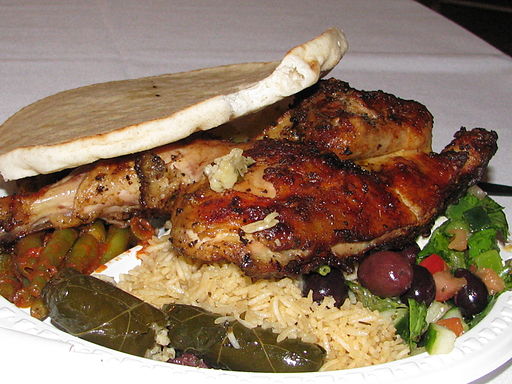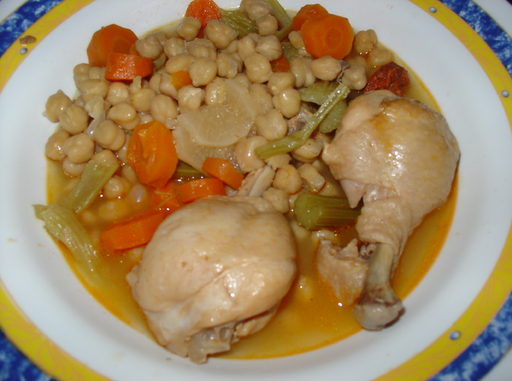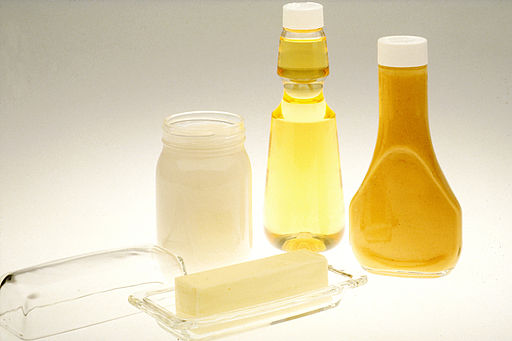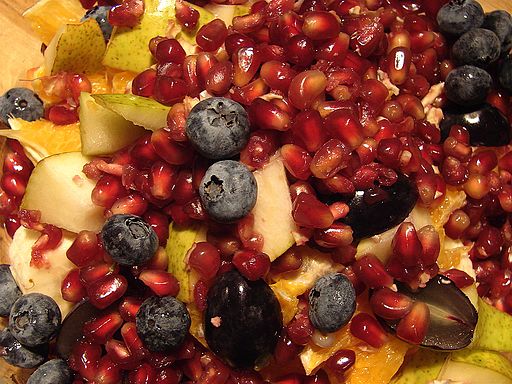
The word “Diet” comes from the old French word, “diete” dating back to the early 13th century A.D with the definition being: To regulate one’s diet for the sake of health; often with a sense of restriction. The word also derives from the Latin word, “Dieta” meaning: Parliament in the political sense and daily food allowance in the nutritional sense.
The definition of the word “Diet” according to the Merriam-Webster Dictionary is :
“1 a: Food and drink regularly provided and consumed
b: Habitual nourishment
c: The kind and amount of food prescribed for a person or animal for a special reason.
d: a regimen of eating sparingly so as to reduce once weight <going on a diet>
2 : something provided or experience repeatedly < a diet of courses to get a degree>
Daily Values (DV) : All of the dietary reference values used on the U.S.Nutrition Facts, help label of the foods that we buy. These values are the minimum requirements that people need on a daily basis and the values have been determined by the FDA. The FDA or Food And Drug Administration is a federal agency of the United States Department of Health and Human Services–which is one of the United States federal executives departments.
The role of the FDA : The protection and promotion of public health. In order to do that, they regulate and supervise : food safety, dietary supplements, over the counter medications, prescription medications, tobacco products, vaccines, biopharmaceuticals, medical devices, transfusions, electromagnetic radiation emiting devices, cosmetics, animal foods, and veterinary products.
The problem that I see in the Daily value is that the reference is according to a diet of 2000 calories.
Do petite women need to eat 2000 calories a day ?
A better parameter is according to the height.
According to the fashion industry, petite women sizes are 5’4” (1.62 m ) tall and under. The reality is that women 5’4” and 5’3” tall can find their sizes on regular style clothing too.
We can have an idea of how many calories, grams of protein that we need using our size as a parameter.
The ideal weight was calculated by insurance companies in the 90’s. They noticed that people that have the ideal weight did not get sick as often and did not use the health insurance as much as those who did not have the ideal weight.
They made a table were they considered what is a healthy weight. Here is the link to see the table.
If you want to have an approximation of your ideal weight without using the table, it is easy to convert when you convert your height into centimeters.
You use the last two numbers of the measure in cm and for women, minus 10% of the number.
Here an example:
5’2” tall = 157 cm tall. The ideal weight for a women is 57-5.7= 51.3 kg = 113 lbs.
As you can see on the table from the link, a healthy weight is a range, not one number. The 10% minus in women would be the minimum weight, a parameter. According to the insurance companies, the closer you are to the ideal number, the healthier you will be. http://www.bcbst.com/MPManual/HW.htm
In the real world, you have to feel good about your weight. This is why there is a range.
There are different types of diets. A diet for losing weight should be a nutritious diet that will provide the adequate amount of water, calories (according to the ideal requirement of energy), protein, carbohydrates, fats, vitamins, minerals, and antioxidant.
We all need a nutritious diet, all the component of foods work together to maintain the metabolism, repair of tissues and system.
Each component is a chapter in nutrition books and we do not know everything about them. Even though we know a lot about natural food, more studies and trials need to be done to know more about it.
Here is a summary of facts and main nutrients of a healthy diet:
Calories
After you determine your ideal weight, you determine the number of calories that you need to consume in a single day according to yor activity:
Number of Calories: There are several ways of calculating the number of calories that we need per day, there are calories calculators too. An approximation of the daily calorie intake is as follow:
20 calories/kg/day sedentary activity
30 calories/ kg/day moderate activity
40 calories/ kg/day high intensity activity
The Calorie:
One of the concerns of the calculation of calories was the calories derived from the breakdown of protein, would it be included to determine the calories to consume? The answer is yes, they count too.
Most foods give you calories. Protein gives you 4 calories/gr. Fat gives you 9 calories/gr. Carbohydrates give you 4 calories/gr.s given by carbohydrates are easier to accumulate into fat if you do not use up those calories by doing exercise. This is especially true for the carbohydrates from easily digestible processed foods like bread, noodles, cookies, cake, muffins, potato chips, potato, rice, corn chips, corn bread, french fries, and sodas. This is why if you want to lose weight you should avoid these foods as much as you can.
Protein

Protein is made of amino acids. Some amino acids help in the production of energy, but the main purpose of protein is repair, maintenance, and tissue regrowth. Protein is used especially in muscle, skin, the circulatory system, and skeletal system. It also increases collagen, genetic information, immune system function, cell function, metabolism of sugar and fats and other functions around the body.
Main sources of protein are gelatin, meats ( beef, chicken, lamb, turkey), fish and seafood, dairy, eggs, beans, nuts, quinoa, and buckwheat.
Requirement of protein a day : 1-2 gm/ kg/ day. Bodybuilders, athletes, and other special conditions may require more protein.
Here a list of high protein content foods : ( 100 gr= 3.5 oz.)
Fish and seafood : 11-25 grams of protein/ 100 gr
Meats: 20- 30 grams of protein/ 100 gr
Hot dog: 10 grams of protein/ 100 gr
Gelatin : 80 grams of protein/ 100 gr.
Cottage cheese : 14 grams of protein/ 100 gr.
Greek Yogurt: 10 grams of protein/ 100 gr
Milk: 4 grams of protein/ 100 ml
Nuts : 8-20 grams of protein/ 100 gr * because of the high content of fat in nuts, they should use carefully.
Boiled egg : (0ne) 12 grams of protein / one egg.
1/2 of cup of quinoa : 4 grams of protein
1/2 of cup of cooked beans: 7 grams of protein
1 cup of soy milk : 8 grams of protein.
Fat

Fat is important for your body. The healthy level of fat in the body for men is 15-20 % and for women is 20-25 %. Fat is important in women for the production of sexual hormones, women that do not have enough body fat can have menstrual irregularities.
The body uses body fat for energy, insulation to regulate body temperature, part of bone marrow, brain, and nervous tissue, cushion internal organs, production of hormones, absorption of vitamins A, D and K and antioxidants. production of cell membranes and cell metabolism.
Too much fat in the body can cause chronic health conditions like obesity, diabetes, and heart conditions.
If you need 1,600 calories per day you need 30-60 grams of fat/day.
Choose healthy fats instead of saturated fats or trans fat.
Healthy fats like omega 3, olive oil, butter are good for you in moderate amounts.
Avocado and nuts have healthy fats too.
Carbohydrates
![IMG_0719[1]](https://petitegirlsdiet.com/wp-content/uploads/2016/05/IMG_07191-580x435.jpg)
The calories given by carbohydrates are easier to accumulate into fat in your body if you do not use it by doing exercise. This is especially true for the carbohydrates from easily digestible processed food like bread, noodles, cookies, cake, muffins, potato chips, potato, rice, corn chips, corn bread, french fries, and sodas. This is why if you want to lose weight you should avoid these foods as much as you can.
Fruits and vegetables have complex carbohydrates that are good for you. It is better to eat fruit and vegetables instead of cereals especially if you need to lose weight.
If you need to eat carbohydrates, choose a banana, sweet potato, quinoa or buckwheat. Be very mindful and eat slowly. It is better to eat carbohydrates with protein and fat.
I really do not recommend high carbohydrate content foods for losing weight. Be careful with carbohydrates.
Vitamins, Macro Mineral And Trace Minerals

Rich nutrient foods like meats, fish, legumes, fruits, and vegetables, have a big quantity and quality of vitamins, macro minerals, and trace minerals.
Vitamins, macro minerals, and trace minerals do not act alone. There has to be a good quantity and quality of protein, fats, and carbohydrates.
The human body is complex. It is programmed to do a lot of complicates functions: the production of energy, the creation, and regeneration of tissues, the healing, the protection against viruses, bacterias and other strange substances and physical agents.
Vitamin D for example and be absorbed in the intestine when we eat salmon or drink milk. At the same time, vitamin D is formed when skin is exposed to sunlight.
When we eat oranges, which are rich in vitamin C, it is absorbed and it helps in the regeneration of tissues and with the immune system.
When we drink milk, which is rich in calcium and vitamin D, these nutrient are going to be absorbed and the calcium is going to go to the bones give them strength.
Vitamin A, B complex, and C are going to work together to give us a nice skin, but of course, we have to eat enough protein to make it possible.
Other articles in this site will describe better the function of each vitamin, macro-mineral and trace minerals, but let’s remember that they do not work alone and our diet has to be healthy with a combination of all the nutrients to the organs (which are made of different kinds of tissues have differents functions) one helping the other.
Nutrients are absorbed, stored and used according to the need and the programs of the body,
Vitamins, macro-minerals, and trace minerals are the molecules that put things together, helping in creating and producing energy, metabolism, and all other cell functions
For the purpose of understanding and study, vitamins are classified as following:
Fat Soluble Vitamins
-
Vitamin A
Vitamin D
Vitamin E
Vitamin K
Water Soluble Vitamins:
-
Vitamin C
B1 Thiamine
B2 Riboflavin
B3 Niacin
B4 Choline
B5 Pantothenic Acid
B6 Pyridoxine
B7 Biotin
B8 or BH Inositol
B9 Folic Acid
B10 PABA (Para Amino Benzoic Acid)
B11 Salicylic Acid or Pteryl-hepta-glutamic-acid
B12 Cobalamin
Macro Minerals and Trace Mineral
-
Macro Minerals : The 1% of our Total Body Weight should be macro minerals. We need them in quantities greater than 100 mg/day. These are:
Sodium (Na),
Potassium (K)
Chloride (Cl)
Magnesium (Mg)
Calcium (Ca)
-
Trace Minerals: Are elements that are needed in smaller amounts ,between 1- 100 mg/day. These are:
Iron (Fe)
Zinc (Zn)
Copper (Cu)
Chromium (Cr)
Iodine ( Y)
Selenium (Se)
Manganese (Mn)
Fluoride (F-)
Molybdenum (Mo)
There is another group of minerals called Ultra Trace Minerals -Silicon (Si), Cobalt (Co), Strontium ( Sr), Bromide (Br-), Arsenic (As )- in very small quantities are suspected to have a role in health but still with minimal evidence; some Homeopathic formulations and some foods have tiny amounts of this ultra trace minerals naturally , more studies need to be done.
Now that we have reviewed the components of a healthy diet, let’s make sure to remember: when we go to the supermarket or farmers market, make the free choice to buy healthy foods.
Leave a comment (or question) in the comment section, and buy vitamins at the best price, click the link below and it will bring you to the best prices fulfilled directly by Amazon.




![IMG_0719[1]](https://petitegirlsdiet.com/wp-content/uploads/2016/05/IMG_07191-580x435.jpg)
Wow, really great, in depth review of the different food groups and how they affect our health! I have a question, the people who go on those low fat high protein diets, would they have a a problem getting their daily supply of fat soluble vitamins? My mother has pancreatitis and has to avoid fat at all cost. I was just wondering if she might have some trouble getting those essential nutrients. Thanks!
Hi Sam, people in high protein, low carb diets need some good fat too. Salmon and other fatty fish and nuts have some good fats. Your mom is an special situation due to her pancreatitis, she could ask her doctor if she needs some multivitamin that includes the water soluble and fat soluble vitamins plus minerals and see if she tolerates that.
Like!
What a great info you have here.
I’m trying to find for me and my wife a diet plan, and your site just makes me more hungry 🙂
The VITAMINS MACRO picture looks great and I will want to try it.
Do you have a recipe here on your site?
Thanks.
Hi Efi: I have a lot of healthy recipes in mind and I have to put them together for my readers. Thank you for your comment and for visiting my site
Great informative post, thanks!
I also write about petite girls health, wellness, and nutrition on my blog and love finding like-minded girls!
Sophie xo